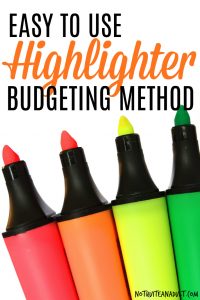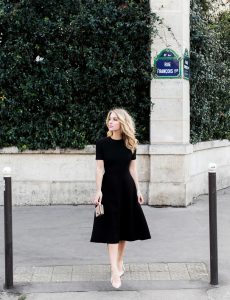 Anyone who knows me personally (especially in University) knows how much I love stationary and other school supplies. I was that kid in school that had 2 of every colour highlighter and my notes looked like the inside of a box of candy. A few years ago when I heard of the highlighter budgeting method I got really excited because highlighters give me tingly feelings all over.
Anyone who knows me personally (especially in University) knows how much I love stationary and other school supplies. I was that kid in school that had 2 of every colour highlighter and my notes looked like the inside of a box of candy. A few years ago when I heard of the highlighter budgeting method I got really excited because highlighters give me tingly feelings all over.
I knew that I needed to share the highlighter budgeting method with my readers because there have to be other people out there who love to make things beautiful! There’s an entire community of people who love to decorate planners, so the highlighter budgeting method would be perfect for them!
This budgeting method is probably one of the easiest to understand out there, so it’s a really great option for people who either hate budgets or people who have never seriously tried to start a budget.
Our blog posts often contain affiliate links, you can learn more in our very long (and very boring) affiliate disclosure!
Table of Contents
Highlighter Budgeting Method
The highlighter method is basically just a fun way to track your expenses and make it a bit more visual and is used as a guide for how much money you should budget in each category the next month.
Tracking your expenses is an essential first step to any good budget because it gives validity to the numbers that you’re assigning to each category. It’s never a good idea to create a budget out of a dream life type of situation. You don’t want to assign only $50 a week to groceries if your family spent $150 a week last month because you’re probably going to go insane.
Having a good idea of where you money goes when you aren’t budgeting is a great way to understand the difference between wants and needs. There are things that you need to survive, and places where your money should go but a lot of the time your money ends up disappearing into impulse purchases that may only be $5 each but make up a majority of your spending each month.
1 // Pick How You Want to Track
It’s important to pick a tracking method that works best for you. No matter which you choose I highly suggest that you use a paper method because writing things down and seeing them on paper makes them connect better in your brain.
You can track your expenses and do all of this online, but for a lot of people it just doesn’t work the same way! Crazy, right?
You can choose to either print out your actual bank statements, or to use a paper expense tracker to use this method. If you only have one bank account, a bank statement is an awesome option. However, if you have money coming in and out of more than one area it’s best to probably consolidate all of your accounts onto one piece of paper.
If you are still using credit cards this money should be tracked as well, let’s remember that just because it’s on a credit card doesn’t mean you don’t have to pay it back!
2 // Choose Your Categories
Picking categories is a very simple process and they’ll be relatively similar for most people. Common budgeting categories include:
- Food (Groceries, Eating Out, Coffee)
- Household Expenses (Mortgage/Rent, Utilities, Insurance)
- Transportation (Car Payment, Gas, Repairs, Insurance)
- Debt Payment (Student Loans, Credit Cards, etc)
You can add as many different categories as you’d like and each of these categories gets a different colour. (i.e., food gets to be blue, transporation gets to be yellow)
3 // Highlight & Find Totals
Go through your bank statement or paper expense tracker and highlight everything from a certain category the same colour. Once you’ve gone through every category your paper is probably going to look a little bonkers, but that’s the whole point!
Now that you have your page completely highlighted it’s time to figure out your totals. Find the total of each category by adding together all the amounts you spent in each colour!
What to do With These Totals!
Now that you have the totals of each category, you can figure out the amount of money you need to budget for each category next month. This is also a great way to figure out where you should cut expenses. You can turn this expense tracking method into an awesome budget if you combine it with the Zero-Based Budgeting Method which is my go-to way to budget and what I recommend to all my readers for it’s ease of use.




Leave a Reply